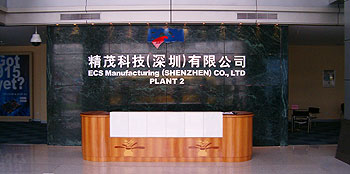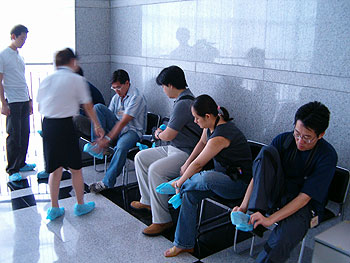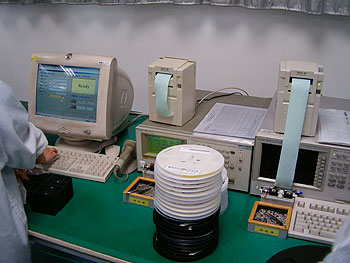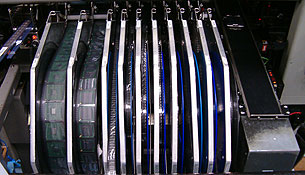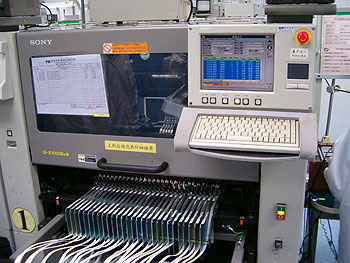Then ECSM turn it into a working mainboard
Building 26
ECSM have a couple of factories in ShenZhen economic district and it was the newer, not fully occupied, Building 26 that we were shown. Building 26 takes PCBs from Biloda and turns them into working mainboards for ECS and ECSM's other customers. The tour of 26 started with the requirement that we don protective covers over our shoes, before trecking round the floors of the factory that we were interested in. ECMS also produce notebooks PCs in 26, too, which I'll quickly look at later.A motley crew of editors and ECS staff sit and slide on their footwear protection, including Andrew Tseng of ECS U.K. (far left), my contact at ECS over here and the guy who made the trip possible (cheers!). Notice Zach Chan of HardwareZone on the far right, looking mean and moody. He's the badass of the hardware editor's world, I kid you not.
Turning Biloda's PCBs into mainboards
Going back to this article's intro, where I asked you to think logically about how a mainboard is produced, you'll remember that it's pretty much a case of dropping the components into the drilled holes and soldering them on so they stay put, before testing. That's almost precisely what happens. There's still a mix of robotic and human steps to it all, with robots doing pick-and-place with the smaller SMT components (surface mount) and women (the female of the species has smaller, defter fingers) do some of the larger items, like memory and PCI slots, and the CPU socket.Firstly, before the SMT components are loaded into the robot that'll pick them up and place them on the mainboard, they're all tested electrically. The reels are loaded into the tester, which makes sure each one works. If a few components in a reel are bad, the reel is set aside for further testing later on, with a new reel tested that's more likely to have fully working components, so as not to slow down the process.
If testing passes, the robots are loaded with their reels. Notice how larger components like the i915GL and ICH6 chips are placed by the robot, too, along with the smaller SMT components.
The the robot, fed with a mainboard PCB, picks up upto 6 components from the reels (it has 6 'hands') and places the components on the mainboard in quick-fire fashion, before going back for upto another 6. You can see it's managed by software, which instructs the robot what components to pick up and where, to pin-point accuracy, they're to be placed.






